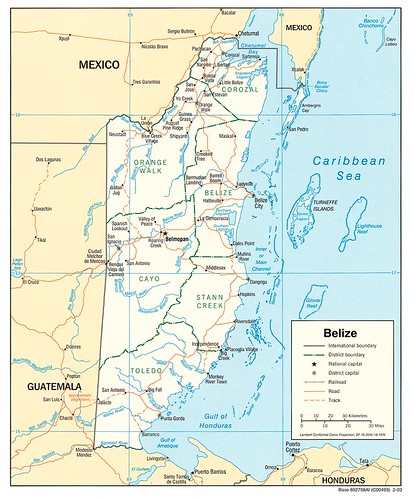I get two reactions when I tell people I’m spending the summer in southern Belize: One is an eye-narrowing, which must mean envy, followed by something like, “I’ve heard Belize is Paradise.” The other is a look of bewilderment with, “Where’s that?”
I tell themit’s where all the continents meet. Who knew? There, I read, people of indigenous American, European, African and Asian heritage live in both integrated and separate communities – with a variety of interests in and relationships with the rich and beautiful Sarstoon-Temash National Park. Within the park live coral snakes, American crocodiles, jaguars, pumas, red-footed boobies, and countless other species, including the endangered Antillean manatee and neotropical river otter.
I am so excited, but I’m also daunted by the enormous challenges ahead. The oil company US Capital Energy plans to start drilling in Sarstoon-Temash as early as this summer. In 2006, the Sarstoon-Temash Institute for Indigenous Management (SATIIM), the group with whom I’ll be working, stalled exploration with a victory in the Belize Supreme Court. The Court ruled that an Environmental Impact Assessment was required before the company could begin work in the park. But now, with a completed AIE, the company has the go-ahead from the government –but not from the very group charged with protecting the park, SATIIM.
A recent position paper by the group demands that any decision on oil development be based on “economic equity, environmental justice and respect for human rights.”
I don’t know if anywhere in the world oil drilling has been carried out in adherence with these principles. I have a lot of research to do on this matter and many more before the big journey begins in June. What is clear is that developments in southern Belize over the next few months could be enormously consequential on the local level while potentially affecting universal struggles between natural resource exploitation on the one hand, and indigenous land rights, environmental protection, and economic equality on the other.
It’s an honor to get to work with SATIIM and to be a part of this challenge.
Next entry will follow touch-down in Belize.

Posted By Amy Bracken
Posted May 23rd, 2011


2 Comments
Malika Carter
June 5, 2011
Amy!
Just listened to your report on composting toilets in Haiti!! Sounds like you have quit a summer planned. You rock!! Will be in Boston @ the end of July but sounds like I will miss you. Have an amazing summer!!
Much Love!
Malika